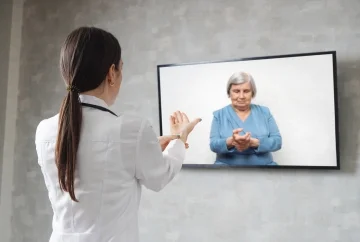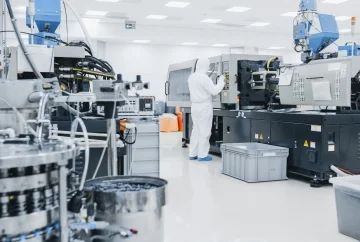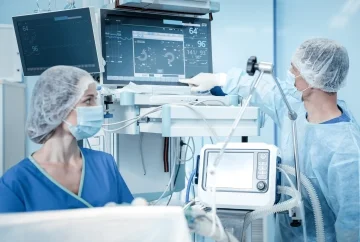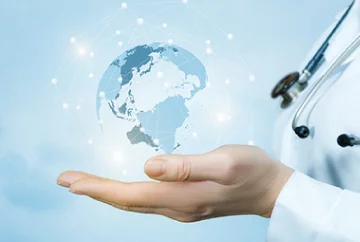5G is at the forefront of this transformation, and its use cases in healthcare are already promising. According to IDC, 5G helped local authorities in Wuhan, the pandemic's epicenter, connect their medical devices and staff on a centralized network with high-speed data transfers and real-time, high-quality internet connectivity.
In Milan, dubbed as the 5G capital of Europe, Vodafone set up 5G connected ambulances to help paramedics stay in touch with the emergency management center and doctors at all times. As a result, the hospital staff is equipped with patient information and symptoms beforehand, which helps them chart the action in advance of a patient’s arrival.
These are just a few potential use cases of 5G networks in healthcare.
5G is creating ripples because of its potential to lower latency, enable high-speed data transfers, and save costs by $94 billion for the healthcare industry by 2030. Let's explore the importance of 5G in the healthcare industry, followed by its most promising healthcare use cases, from remote monitoring to augmented reality in patient care.
The Need for 5G in Healthcare
Higher Reliability and Security
5G networks can provide 99.999% reliability, and that's one the biggest benefits of 5G — guaranteed service with ubiquitous coverage. Proper and timely data transmission is crucial for all real-time 5G medical applications in healthcare, such as remote patient monitoring, Augmented Reality (AR)-assisted robotic surgeries, and connected ambulances.
Additionally, 5G networks are more secure than their older wireless counterparts with advanced encryption protocols, better privacy protection, software-defined infrastructure, and a sophisticated authentication framework.

8 Top 5G Use Cases in Healthcare & Medical Device Industry
Better Performance
5G networks offer high-resolution bandwidths and reduce latency (1 ms or less) by minimizing the delays and increasing data transfer speeds — from 100 Mbps to 20Gbps. Enhanced network performance is crucial for real-time data transfers. For instance, if a remote consultation with a patient is riddled with lags, doctors cannot diagnose health conditions properly — a delay in arm movement could be a symptom of an issue with the latency of teleconsultation technology. Better performance is also a prerequisite for applications based on augmented reality.
Improved Capacity
4G networks can only handle a few thousand connected devices. However, 5G networks are equipped with a capacity of up to 1 million connected devices per square kilometer. Such improved capacity is essential to support an entire healthcare ecosystem of connected devices transmitting large files in real-time. For instance, a connected ambulance brings together paramedics, ambulance operators, trauma center coordinators, the hospital staff, and the various patient monitoring devices. 5G connectivity is essential to support lightning-fast transfers of medical records and high-quality video calls in such an environment.
5G Use Cases in Healthcare
As we've already mentioned, there are a plethora of 5G use cases in healthcare. However, the biggest benefit is its ability to facilitate high-quality teleconsultations and medical procedures for patients regardless of their locations. So, let's look at some of the top use cases.
- 5G and Telemedicine
- Augmented Reality In Healthcare
- Clinical Collaboration and Communication
- Computer-Aided Diagnostics – Medical Imaging
- Connected Ambulances
- Medical Sensors
- Remote Patient Monitoring
- Remote Surgery Using 5G
#1 5G and Telemedicine
It facilitates telemedicine, especially in rural areas, warrants a network that can support real-time, high-resolution calls without lags or jitters and high-speed transfers of large files. The low latency and larger bandwidths of 5G networks can enhance the quality of telehealth consultations, reduce costs for healthcare facilities, and improve the overall patient experience.
Moreover, when faced with pandemics, telemedicine is the safest route, as it eliminates visits to a doctor's office and connects patients in remote pockets of the world with specialists and well-equipped medical facilities.
#2 Augmented Reality In Healthcare
Augmented reality has several applications in healthcare, from remote monitoring to surgeries, thanks to 5G. Using AR in a 4G environment is mired with lag times, usually 20-50 milliseconds long. These lags lead to motion sickness over an extended period as there's a mismatch between visual recognition and brain processing. The greater performance, bandwidth, and reliability of 5G networks overcome these limitations.
An example of AR in healthcare is Vodafone's AR HoloLens glasses, which help paramedics check out medical records and access critical information on patient handling and treatment. So, if the patient is a pregnant mother in labor, the AR glasses provide the ambulance staff with information such as the right questions to ask and the steps to follow en-route to the hospital.
#3 Clinical Collaboration and Communication
It's not uncommon for doctors to wait for hours to receive medical imaging and other lab tests run by their colleagues at the same facility. Such lengthy wait times, coupled with a lack of collaboration and communication, slow down the speed of diagnosis and treatment, which creates an unpleasant experience for the patient, introduces risks to the quality of care and incurs enormous costs for the hospitals.
A hospital-wide 5G platform can solve the problem by letting lab technicians transmit large files within seconds without compromising the quality. Such a platform also connects the devices within the hospital, from medical equipment to smartphones and tablets used by the hospital staff, making data easily accessible in real-time.

8 Top 5G Use Cases in Healthcare & Medical Device Industry






